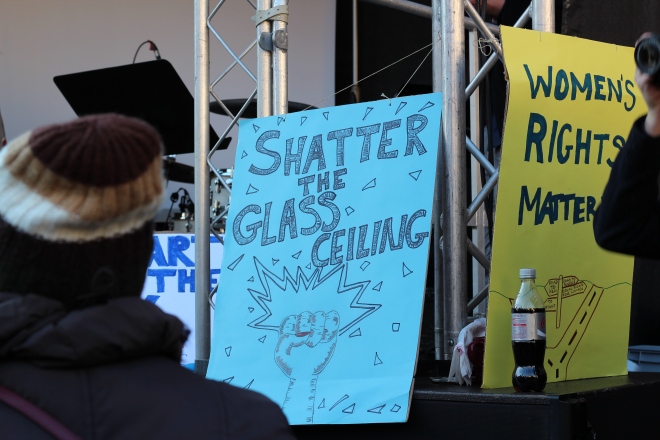Course: Maquetacio Editorial (Editorial Design) /EINA
- Goal: to emphasize bilingual characteristics of the team
Poster design for reinterpreting the manifesto ‘First things first’ by Ken Garland
Course: Maquetacio Editorial (Editorial Design) /EINA
Poster design for reinterpreting the manifesto ‘First things first’ by Ken Garland
Summary & Critique
As an individual, being interested in the whole process of data collection, selection, analysis and visualization, it is very sparkling idea by gathering much more opinions without distortion with novel device. Though the usage is restricted in the special events, mostly playful and entertaining, but the idea itself can be developed much more. By using VoxBox, visual and immediate feedback, or result, is possible by providing balls after the whole process and lights of the panel during the progress. Especially, to provide intuitive affordance, using sliders, buttons, knobs, spinners and handset, all are familiar, according to the goal or type of the question makes audience keep answering.
While VoxBox is very straightforward idea to collect public’s idea, trying to produce physically, technology and design in touchless interaction in hospital, especially in situations of surgery, is still in the phase of idea, rather than be realized physically. Normally, surgeons should ‘touch’ screen or panel to check patient’s status even if they are in surgery, which means they have to break asepsis, maintaining sterility, mostly to become available to the interactive device. How interactive! One or two-handed gestures, possibly combined with voice-recognition, or even more different kinds of gestures not restricted in hands will solve this kind of problem. Actually, it is not the matter of the technologies but the matter of the idea and design itself for this creative device to be executed. To popularize in the real surgery circumstances, it seems that more observations and researches are required.
Summary & Critiques
Both projects are concentrating on the emotional factors to conduct interactive studies. The first one is to measure the emotional expression or the degree of emotional wellness by retracing records of the social network service like Twitter. By analyzing words used into positive or negative part and distinguishing, ‘daily moon’ is embodied with color and size to represent the emotional state of the day. This trial to show the state as a moon is quite sentimental but not very intuitive.
Using technologies like machine learning combined with statistical result can be evaluated as the latest techniques. Also, it is meaningful in terms of analyzing implications, ethical considerations and limitations from the result, or the prototype, of the project. However, it seems this research focuses on the emotional reflection/wellness and eliciting some results rather than something interactive between a user and service. Still, by suggesting possibilities of being able to impact the behavior positively, it can be led to a future research opportunity focusing on the positive interaction of the user and service, then improving emotional wellness which is very important but belittled.
The second one is to make a haptic creature, very similar to real animal, but in the minimalistic way to conduct a study of interaction between human and robot through affective touch. It is unique development by concentrating on the touch more than visual or auditory senses with dividing some steps of the interaction between human and robot. However, it leaves much to be desired in terms of getting some meaningful result, rather seemed like preliminary studies, asking for some additional research.
Two research imply that interaction design with emotions from wellness to five senses including touching has much possibilities of research to be conducted in terms of the mental health or social interaction, not only for the person oneself but also for the relationship between human and robot.
My pinterest ‘Sketches’ pin: https://pin.it/faslxw6azmrjmo
Summary & Critique based on readings of ‘Affordance’
According to Norman, ‘affordances, both real and perceived, play very different roles in physical products than they do in the world of screen-based products.’ About 20 years have passed after this thesis; nowadays there are a myriad of ‘screen-based products’ utilizing perceived affordance. He also added ‘All of these actions –decision within the computer screen- are abstract and arbitrary compared to the real, physical manipulation of objects, which is where the power of real and perceived affordances lies.’ Today, in the virtual world, it is hard for people to find places not using those screen-things.
But it has to be clear that affordance, perceived affordance or convention should be distinguished with its own definite meaning not to confuse with each other and to indicate exact things. Though I do not agree the way he divided those two, affordance itself and perceived affordance is certainly, should be, different.
In the Gaver’s paper, he primarily explained about ecological perspectives, in contrast to cognitive approach, in perception and action. While the latter focuses on the sensations of human integrated with memories, the former stresses human-scaled objects with perception and action. In the ecological perspectives, affordance can be visual, sound or other senses while Norman did write it is normally appearance, visually set according to his experience in England.
Both of them tried to classify perception from affordance in different ways. But Gaver wrote ‘Affordances exist whether or not they are perceived, but it is because they are inherently about important properties that they need to be perceived’ while Norman might think these are not affordances at all. In addition, while Gaver thought affordance is like a doorhandle to make people it pull, Norman insisted on the idea that it is conventionally established tool, which is not affordance. Therefore, Gaver would think stair is a kind of affordance to provoke to climb while Norman would think it as a convention, which we have been educated to climb. Since it is a matter of perspective, there is no right thing. It can be compared to the old question, ‘Which comes first, an egg or a chicken?’
Unfortunately, in the process of trying to produce the video with better quality, I lost the original file. But at least you can see anyway.
Course: Interaction Design
World Women’s Day of Frankfurt, Germany, 2017





Pride Barcelona, Spain, 2017







Course: ‘Deisgn 4: Global Culture and Art Workshop’
With collaboration of the movie ‘The Grand Budapest Hotel’, preparing ‘Victoria’s secret’ brand exhibition by building virtual flagship store is very interesting workshop.
After concept development during whole semester, making facade of the flagship store and publishing portfolio are mandatory to show branding and design skills with detailed marketing strategies.